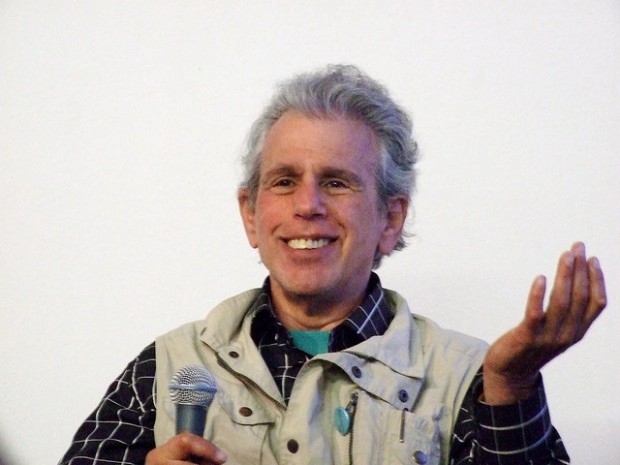Seth Siegelaub passed away this weekend at the age of 71. The Bronx-born dealer and curator was a rare breed in that he was actively involved with the lives of the conceptual artists he championed in the 1960s and 1970s. With dozens of exhibitions, publications, and projects under his belt, Siegelaub might appear difficult to pin down. But, like pearls on a string, all show Siegelaub’s life-long dedication and unwavering commitment to legitimizing non-traditional forms of art and improving artists’ daily lives.
Siegelaub first started out in the arts as a gallery assistant at the SculptureCenter—“then a far more conservative ‘garden sculpture’ set-up’”—before he set out in 1964 to found his own gallery, Seth Siegelaub Contemporary Art and Oriental Rugs, eventually shortened to “Seth Siegelaub Contemporary Art”. Always the inventive businessman, Siegelaub did, indeed sell rugs alongside art, and continued to do so after the gallery shuttered in 1966. That closing was, perhaps, a blessing in disguise for Siegelaub, and his hands-on approach to disseminating and promoting conceptual art.
Throughout the 1960s, he continued to develop close relationships with conceptually-minded artists in New York, of whom Joseph Kosuth, Lawrence Weiner, Carl Andre, and Robert Barry, among others, can be counted. Siegelaub’s highest period of activity ran from 1968 through 1971, when he organized over twenty-one exhibitions and conceptual projects. From this time period, he will most likely be remembered for assignment-based art projects like the Xerox Book (1968) or One Month (1969), and the pragmatic legal resource, “The Artist’s Reserved Rights Transfer And Sale Agreement” (1971).
Siegelaub’s familiarity with artists on a day-to-day basis contributed to his political activities in the arts. Alongside fellow curator and critic Lucy Lippard, (who he dated during this time period), Siegelaub was actively involved with the Art Workers Coalition. At a January 1969 AWC public hearing on museum reform, he told the crowd of fellow art-workers:
[A]nyone who’s interested as I am in my work to try and change the machinery or the context in which the art has been made and is being seen, would see that the greatest asset that artists have is their art. It would seem that for a social protest or any other type of action in withdrawing your work or setting tight controls over it, you could achieve the goals that are being sought.
He believed that artists should advocate for greater control over the exhibition and sale of their art. That served as an impetus for “The Artist’s Reserved Rights Transfer And Sale Agreement”, a binding contract he crafted alongside lawyer Robert Projanksy that assures artists to copyright of their work.
In 2009, a humble Siegelaub told John Slyce of Art Monthly that he never thought that work was original. “[T]he kinds of questions we were addressing in The Contract were things that everybody in town–any sort of progressive artist or museum person or critic–was thinking about,” Siegelaub mentioned. “It was not original in that sense. What is original is that I got the fucking thing done and Bob Projansky, the lawyer, and I put it into the world.”
That might be Siegelaub’s legacy—to never dream without action. His work will be continued by his granting and research foundation, The Stitching Egress.



Comments on this entry are closed.
{ 1 trackback }